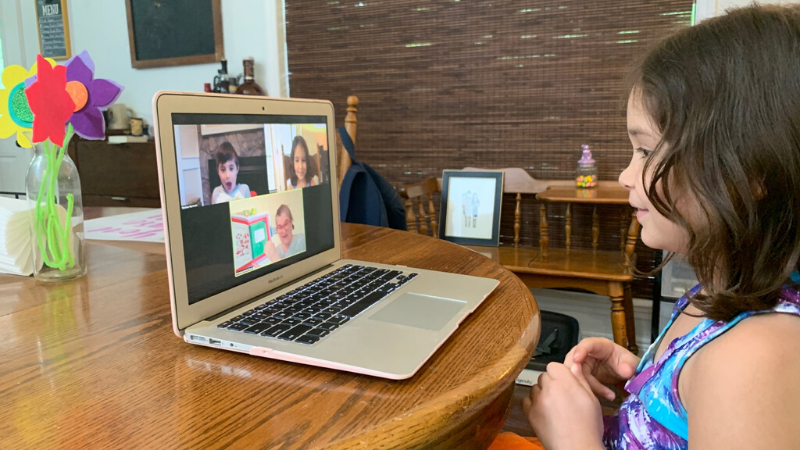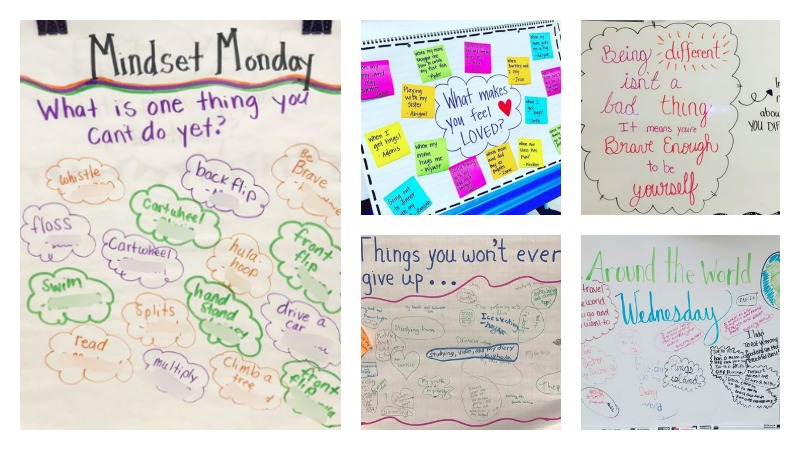How To Work From Home Without Getting Stressed-Out

As most of you know, I only teach in the afternoons. I work from home in the mornings and then head to school after lunch. It’s been my schedule for the past six years—ever since SCM became too large to maintain while teaching full time.
It wasn’t an easy transition.
At first, I felt like I worked a lot harder than when I had less time. I also had a lot more stress. I’d think about writing and working and improving the blog all day long and into the evening. I couldn’t turn it off.
Since we’re all working from home now, many teachers are feeling the same way.
They can’t turn it off. They’re working harder and longer than ever before. They’re stressed-out and struggling to maintain all their other responsibilities.
So this week I thought I’d share a few things that have made the biggest difference in my life working from home. They’ve saved me mountains of time and stress and even made me a better writer.
I hope they’ll be as helpful to you.
Set strict time limits.
Sitting down to work without knowing how long you’ll be there is one of the worst things you can do for your productivity. The open-ended nature of it removes valuable urgency (see below) and encourages your mind to wander.
It also triggers what is known as Parkinson’s Law, which states: Work tends to expand to fill the time available for its completion.
In other words, if you give yourself hours and hours to prepare lessons, for example, then psychologically you’ll increase the difficulty and complexity of the task in order to fill the time.
You’ll overthink, look for problems rather than solutions, and add nonessential busywork.
Limiting your time, on the other hand, increases focus and improves your problem-solving capacity. Remarkably, the quality of your work will also improve, becoming sharper, clearer, and more comprehensible.
The trick is choosing the right time limit, which can take practice.
A good place to start is to cut the amount of minutes you think you need to complete a task by 20 percent and then set a strict work-time limit. Keep cutting day after day until you get comfortable with just the right amount of urgency.
When your time is up, take a break to eat, exercise, read, clean, take care of your family, etc. Get away from your work to keep your mind fresh. When you’re ready to return, set a new limit.
In time, you’ll be able to quickly assess the work you need to do and set the most limited time you need to do it. It’s the secret to getting a lot done in a short amount of time.
Trust yourself.
Once you sit down to work—or stand if that’s your preference—try not to think too much. Overthinking is a form of writer’s block that will slow your progress, if not stop it altogether.
You must trust your instincts and have faith in the ideas and visions that come into your head. If you let them pass or talk yourself out of them, then you’re missing out on your best work.
Just go for it. Rely on your gut and intuition.
This doesn’t mean you shouldn’t research, study your material, or be aware of pros and cons. It just means to believe in yourself when it comes to making creative decisions, whether on a micro or macro scale.
You have enormous natural wisdom available to you. Your job is to let it flow. Let your body and fingers do what the super computer in your head is telling you.
Trust it and your work will be essentially YOU.
It will be creative and original and the best you can offer. But you must take a leap of faith. You must act on your best hunch, then move on to the next thing and do the same.
Put your subconscious to work.
I recommend setting a time limit on your day as well. Maybe it’s the same time as your school’s dismissal. Maybe it’s when you typically leave for the day.
Or maybe, if you’re using Parkinson’s Law, you’re able to cut out even earlier. But the key is to leave the work behind you entirely at a predetermined time. Don’t allow yourself to even think about it until you sit down the following day.
Put your laptop away or shut down your computer and get busy doing something else, even if it’s just reading on your porch.
Not only does this help free you from the stress of cycling thoughts, but it actually improves your work. You see, all the problems and work you leave behind for tomorrow are best resolved with your subconscious mind.
Psychologists have been writing about the ability of the subconscious to find solutions and move toward goals since the early 1960s. It may seem a bit new-agey and a little out-there, but it really works—with more and more research supporting it.
If you leave the problems, puzzles, and dilemmas to your subconscious, while you’re doing other things—even sleeping—it will do the job better than if you noodle them relentlessly in your current awareness.
It will add to that wisdom that mysteriously jumps into the forefront of your mind when you finally sit down to work. Again, it’s about trusting the knowledge and experience you have inside you.
This is why coming back fresh to a problem or task is always easier and results in better and faster solutions than continually thinking on it.
When you step away from your work for the day, really step away. Forget about it. Relegate any leftover conundrums and future decisions to your subconscious.
Let it prepare you for the next day while you’re enjoying life happening right in front of you.
Everyday Habits
When it comes to the productivity techniques above, do not seek perfection.
Just get better each day at trusting yourself and the wisdom inside you. You’ll be amazed with the results. You’ll spend less time working, more time playing, and yet will produce higher quality work.
Like all things, in time this too will become part of who you are.
The techniques will become everyday habits you no longer have to discipline yourself to follow. You may even get to the point where you don’t have to set time limits.
Working with soft urgency and trusting your instincts will become something you do naturally. It will become just the way you think and the way you are.
The only negative is that it can be frustrating to work with others, who may now appear ponderously slow and inefficient. (We’ll be sure to cover this topic on another day.)
In the meantime, send tomorrow’s work to your subconscious and feel all that stress you’ve been hanging on to begin melting away.





